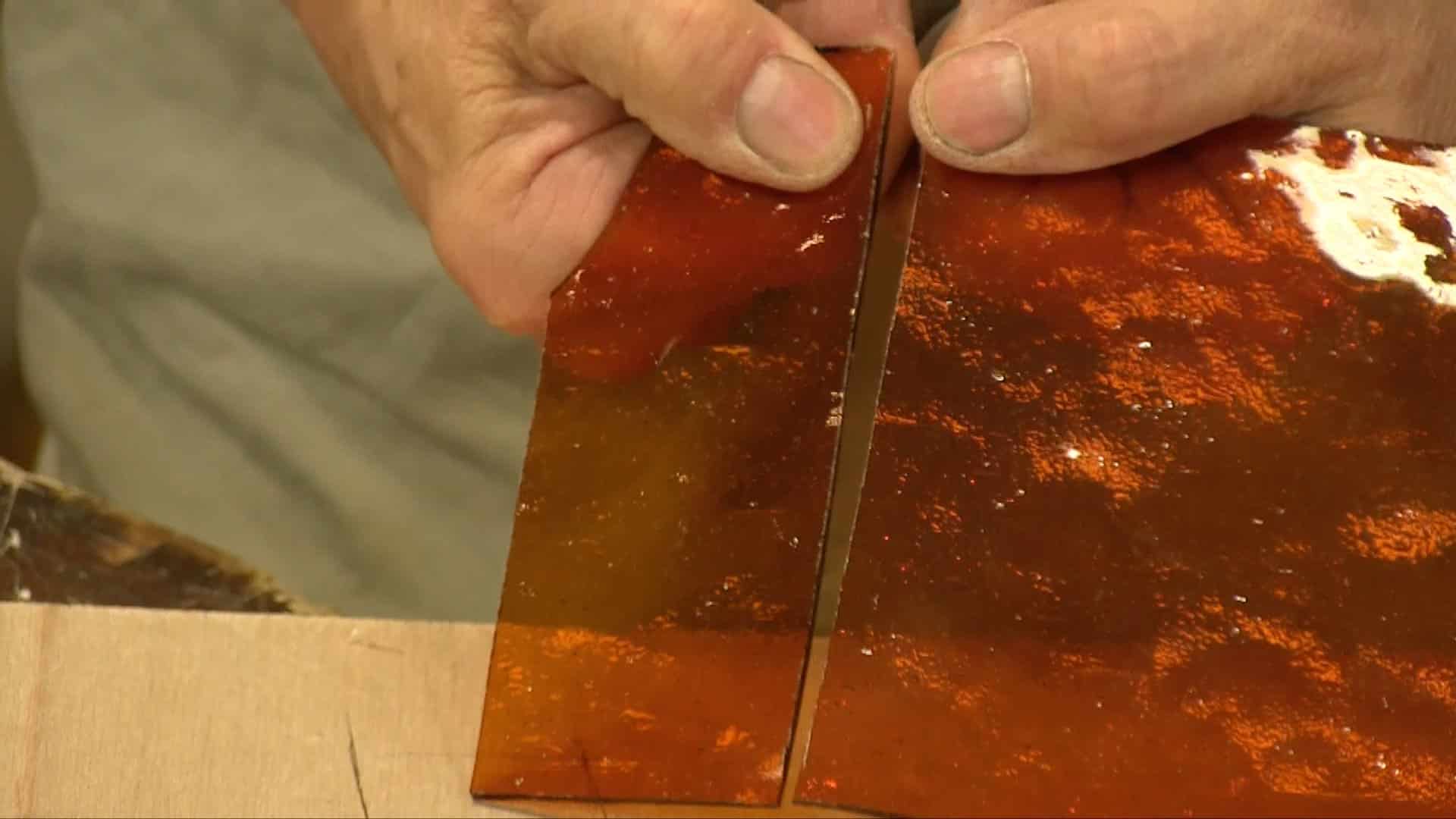Glass cutting
Posted 6 June 2014
This is a free video, want to watch it? Just log into the site, and you can enjoy this video and many more!
Want to use glass on one of your projects but not sure how to cut it to size? See how Paul cut the glass he needed for one of the panels of his lamp project.


thanks for the tips Paul
Hi Paul, glad to see you do the video with “warts and all”. I worked for many years in the glass industry, not as a glass cutter, but you pick up a few pointers. As you say you must make a confident cut and not hesitate at all. The other thing that may have prevented the small vent you experienced would be to tap the glass directly underneath the scored cut line until you see a small vent appear along the line, the glass with then most times follow the scored line.
Thanks for another great video
Worked in hardware store several years. Always used thinner as a lube for the
cutter. Cut glass daily, cutter lasted 5 to 7 years., Try tapping on glass along the
scribed line to help divide two pieces.
I once heard that cutting glass under water helps dampen vibrations and aid the cut breaking along the cut line. haven’t tried it yet. Thanks Paul.
I am the window guy at a hardware store and do a lot of glass cutting. We, of course, use a rig that holds the cutter and produces a square cut with the base of the glass, but the principle is the same as hand cutting. The number one key to a good cut is clean glass and as you said, a confident cut. No hesitation and never a second scribe, this will result in a disaster. This was what we refer to as “double strength” glass, thicker than standard window glass, so the cut is a bit tougher and add the grain and ripples and it is a tough cut. Great job on a bench with hand tools!!
I allways break the glass maybe ill do belter now
for difficult glass, it is best to tap it with the nose of cutter underside before the definite push. It is also probably better to use the same system you use to mark wood with the marking gauge as it forces you to make a confident fast pass. i.e. use one edge of the glass as the guide and glide over the glass with other hand holding the cutter guided by a piece of wood (the old style wooden folding rules are perfect for this) I would also put a thick fabric (a piece of an old blanket would be even better) under the glass plate for better vibration control.
The shelf liner looks like a good idea, as having the straight-edge slip is a very common problem.
Thanks for the video.
All good tips above.
I started as an indentured aprentice glazier at 14, cut a lot of glass since then 😉
A dirty or damaged surface can cause problems, a skip in the cut or a bit of grit can damage the wheel.
Old glass might be a bit ‘firey’, that is, not properly annealed. You would feel it as you cut, the surface being harder than usual and more prone to missing, when the wheel skids for a few mm. It tends to run off or vent more easily when opening the cut.
Old wheels could be touched up running the bevel on a bit of old plate. Modern carbide wheels, no way.
Replacement wheels are cheap enough anyway.
If you use your cutter on tiles forget about using it on glass afterwards.
A cutter that ‘misses’ may just need a new axle, usually bronze.
Keep the axle soaking in oil or parafin when not in use.
Listen for a good cut, you want a continuous hiss, not a heavy scratch.
Try to keep your wrist at a constant angle and don’t ‘flick’ the last inch. Neither should the wheel ride onto the top edge when starting.
When opening the cut, even pressure on both sides of the cut will run the cut square to the face and not pull a razor edgeI would usually put a forefinger knuckle under the end of the cut and press upward.
For belt and braces, a light tap will open the start which you can then run. Don’t stop a run half way, it can close up on you, then go its own way when you re-start.
You can also put a ‘guzzunder’ ( a thin batten) under the length of the cut and press down either side of the batten.
Door stops make ideal guzzunders for larger squares, (don’t let the chippy see you pinching them) 😉
Diamonds are a different kettle of fish.
The angle when drawing back and the speed must be constant. The hiss is even more important.
Ideally a diamond would be used on a glass bench in a shop, not so much on site or for rough work.
A good Cutter in a shop might work with a gang, one fetching, the cutter calling for a stock sheet size, cutting, working out sizes and waste cullet in his head, and one guy stacking the cut squares. (all sizes and shapes are ‘squares’ unless they are in lead when they might be ‘quaries’.
A ton of 24 oz (3mm) glass cut to 11 x 9 s would be a good days work. 🙂
Helpful info. Thanks John.